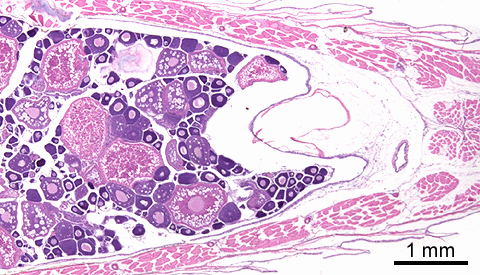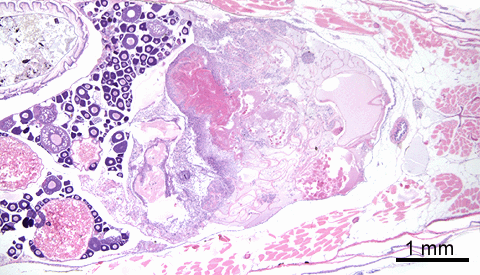Reference
- Nash JP, Kime DE, Van der Ven LT, Wester PW, Brion F, Maack G, Stahlschmidt-Allner P, Tyler CR. Long-term exposure to environmental concentrations of the pharmaceutical ethynylestradiol causes reproductive failure in fish. Environ Health Perspect.112:1725-1733; 2004.

control F1 female

F1 female, 5 ng/L EE2
The oviducts of most F1 females in the 5 ng/L group contained massive accumulations of egg debris
 , compared to females from other groups (see control, above). Early and progressed stages of egg resorption can be discerned in this accumulation of debris, which further contains reactive cells (mainly macrophages).
, compared to females from other groups (see control, above). Early and progressed stages of egg resorption can be discerned in this accumulation of debris, which further contains reactive cells (mainly macrophages).This aberration suggests that these females were unable or at least inhibited to spawn, either physiologically or behaviourally.

adult female zebrafish, H&E (all images) accumulation of eggs in the ovary, F1 female, 0.5 ng/L EE2
On average, EE2 exposed F1 females (0.5 and 5 ng/L groups) had relatively high numbers of mature eggs in the ovary and in the oviduct, compared to group control and after discontinuation of exposure.
| avg # mature oocytes in the ovary per section | |
|
control 5 ng/L, discontinued 5 ng/L 0.5 ng/L |
9.4 11.7 16.9 23.0 |
This suggests that ovulation in these females was inhibited.